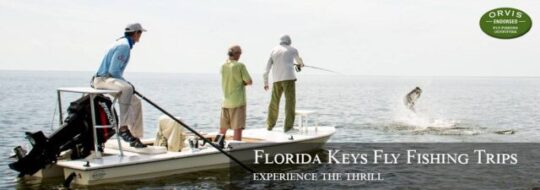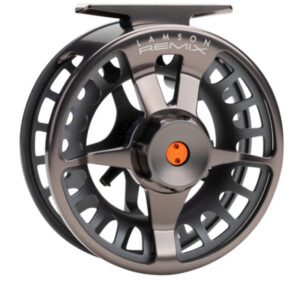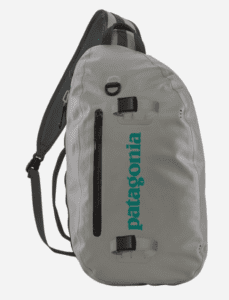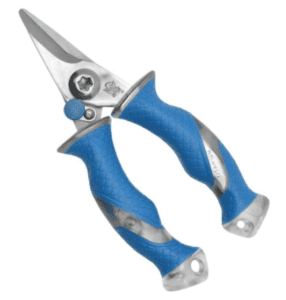
I’ll soon be getting on a plane to Miami International Airport, from where I’ll be renting a car to head to Islamorada, also known as The Sport Fishing Capital of the World. My father Mike and I will be flats fishing with Captain Chuck Schafstall, the guide assigned to us by Orvis Endorsed operation Florida Keys Outfitters. To say I’m an excited would be an understatement, as I’ve been looking forward to this trip for more than a year after our original 2020 plans were canceled.
For the past few months I’ve been preparing for this trip by increasing my knowledge and skills as well as sorting out necessary (and possibly unnecessary) gear. I’ve had to be careful about not overdoing it in terms of anticipation and tackle hoarding, as it’s easy to get carried away when you’re going to a legendary angling destination for the first time, whether it be Montana, Alaska, or a location in the tropics. Still, I’ve been determined to not show up unprepared, as Florida Keys flats fishing is the big leagues of saltwater angling and I want to take advantage of this opportunity.
- Reels: For striped bass fishing last year I invested in a Waterworks-Lamson Remix reel with two spare spools. In my opinion, this is the best deal out there for a large arbor sealed drag reel that comes with multiple spools. The HD version has a burly finish and a full-cage design which is supposed to be better for preventing backing from getting stuck in the frame. It’s kind of a pain to manage when sorting line out through the cage, but the shiny aluminum will survive plenty of drops and nicks. I highly recommend either the Remix HD or the regular Remix for the spool-swapping saltwater fly fisher.

Source: Waterworks-Lamson - Rods: I got a deal this winter on a Redington Predator #10 from a sale that Florida Keys Outfitters was having on lightly-used rods from their demo program and classes. So far I’ve only practiced casting the rod on grass, but it will be my go-to stick when I venture back into Joppa Flats this spring and summer in search of huge striped bass. My albie-ready St. Croix Imperial Salt #9 will make the trip as well as an old Orvis Clearwater #9 as a backup. I maintain that the St. Croix Imperial Salt is the best deal out there for a made-in-the-USA saltwater fly rod.

Source: St. Croix Rods - Lines: Another deal from this past year was that I pounced on previous versions of RIO Products Flats fly lines for half off the original MSRP. If there’s a superfluous purchase that I’ve made, this might be it. I’m confident in the Orvis Saltwater All-Rounder line already in my arsenal to perform well in tropical climates. Still, I wanted to try these RIO warm water specific lines which I’ll have in my gear bag for any future trips down the line.
- Pack: I’m a New England lifer and am partial to Orvis and L.L. Bean, and therefore have a limited amount of gear from Western brands like Patagonia and Simms. But I couldn’t resist asking for a Patagonia Stormsurge slingpack as a gift for the holidays. My five-year-old Orvis slingpack now serves as a designated freshwater pack, and this new waterproof offering from Patagonia will be my saltwater pack. Its large zipper is awkward, but it has the most storage volume of any waterproof sling pack I could find, which is why I went for it.

Source: Patagonia - Leaders and Tippet: I decided to learn how to tie my own saltwater leaders in preparation for this trip. I’ve always been partial to RIO Products tapered leaders, and even checked out their hand-tied tarpon-specific leaders. But for learning to tie my own leaders I bought a bunch of cheap spools of ANDE Mono leader material in sizes 30 lb. through 80 lb., a spool of RIO Products 20 lb. saltwater leader material, and a spool of Hatch 50lb fluorocarbon shock leader material.
- Flies: I intend on dropping by Florida Keys Outfitters on the day I arrive in Florida to look at their fly selection, but there was one fly I couldn’t leave home without: the Umpqua Barracuda fly, which imitates the needlefish. This ridiculously long fly with its tandem hooks reminds me of casting a big dragonfly for trout – it’s the opposite of the sleek, subtle modern flies that we’re all used to. I expect to largely use our guides own flies but will have a small selection of tarpon, bonefish, and permit flies as backups.

Source: Umpqua Feather Merchants - Line Cutter: I’ve found regular nippers lacking when attempting to cut leader material upwards of 30 lb. test, so I picked up a pair of Cuda mini snips. They more resemble scissors than nippers and they’ve have been fantastic. I’m optimistic that their titanium finish will prevent rusting, and they may replace all of my snips for saltwater use, which end up becoming rusted in short order.

Source: Cuda - Clothing, Apparel, and Accessories: I couldn’t resist the World Wide Sportsman Fighting Gloves from Bass Pro Shops, which will frankly be more useful for days of blind casting to striped bass than flats fishing in terms of protecting fingers from cuts due to endlessly stripping line. Lastly, I wear entry level Flying Fisherman polarized sunglasses, lightweight Wrangler hiking pants from Walmart, and paddling booties or slip on sneakers for the skiff.

Source: Bass Pro Shops
Other than the tropic specific fly lines and a barracuda fly, nearly all the gear in my luggage can be reused for Northeast saltwater applications. Ironically, the most important part of this whole trip will be my ability to cast the guide’s own #11 tarpon rod, and I’ll have to be flexible with the line, leader, and fly that he deems appropriate. My own gear preferences and purchases will be meaningless. But if the situation calls for an adjustment or we have a tackle failure, I’ll be ready.
Discover more from BlogFlyFish.com
Subscribe to get the latest posts sent to your email.

Best of luck on your trip. Hopefully you will report back
after to let us know how it went.
Thank you Michael, I appreciate it. I’ll be keeping a daily fishing log and do hope to write a blog post afterwards. Just got to make sure that I land a fish or two so that I have something positive to write about!
Yes best of luck. My only tip from fishing there years ago is to not get blindly focused on just one species, but go with the flow and ask the guide which species is hot. You are well prepared!
Thanks Steve, I appreciate it. Yes, that’s absolutely my attitude. I’m interested in all the species, not just bonefish, permit, and tarpon. I’ve never caught a redfish, barracuda, or jack crevalle, and I’d be thrilled to hook up with any of those species. We’ll be flexible, no expectations!
Sounds like you’ve covered all the bases. I dont quite understand the “entry level” sunglasses after all that, but maybe there is something behind the story on that? Good luck,. Be safe, and send lots of pictures with some close-ups of the fish. ?
Hi Robert, I appreciate the kind words, it means a lot, will do. Re: sunglasses, those Flying Fisherman glasses are outstanding. The plastic frames may deteriorate a little over time, but the lenses hold up great. I have multiple pairs of them. There is a story actually – in college during my NCAA division one rowing days I had a high end pair of Oakley sunglasses that I lost in the water. Since then I suppose I’ve been turned off by investing in fancy sunglasses that can easily get scraped, smashed, or drowned.
Finding a pair of amber polarized sunglasses that aren’t too big, too goofy, or too expensive isn’t easy. The Flying Fisherman brand I actually first picked up at L.L. Cote in NH, and I’m going to stick with them.
They don’t make them with readers by any chance.?
Nice blog